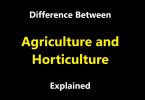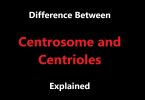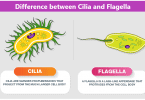The human body produces energy in different forms. The nutrients present in our food are broken down and the leftovers are stored in the body, in different forms. The storage forms differ in animals and plants. The Difference between Starch and Glycogen is that starch is storage form in plants while glycogen is the storage form in animals. There are also structural differences between the two, as one is branched while other is mostly in linear form.
Starch: Definition and Use.
Starch is a chemical compound made by all green plants. It does not have any taste and is white in color. Starch powder is water insoluble and is made up of identical glucose units. In scientific terms, starch can be called a polymer made up of glucose subunits or monomers. It is a polysaccharide which has many forms. The simplest form is amylose while is linear. Amylopectin is the branched form of starch.
During photosynthesis, starch is produced by plants as their reserve food. It is stored in chloroplasts, the green chlorophyll-containing organelle in plants. It is deposited in the form of granules and is broken down by enzymes that are produced in plants.
Instead, it acts as a fiber human body and aids in proper digestion. Starch is also made commercially using wheat and potato. This starch is used in baking as a thickening agent. It also increases the strength of paper, during paper manufacturing. Iodine test is used to test for the presence of starch.
Glycogen: Definition and Use.
Just like starch, glycogen is also tasteless but the Difference between Starch and Glycogen is that glycogen is found and made in animals. It is present in the liver and muscle tissues. Bacteria’s and fungi also produce glycogen. It is the energy reservoir in organisms that produce it.
The excess glucose in the body is converted to glycogen to be stored in the liver and muscle cells. In muscle tissue, glycogen acts as a reserve and this reserve is only used by the muscle cells. When the body faces any glucose deficiency, this reserve is broken down by glucagon enzyme and converted into glucose.
The store of glycogen in the body depends on how much you eat, physical training and the basal metabolic rate. Trace amounts of glycogen are found in white blood cells, red blood cells, and kidneys.
During pregnancy, glycogen is stored in the uterus too, where it plays a role in the nourishment of the growing embryo. Human blood always has up to 4 grams of glycogen. In the liver, 100 t0 120 grams of glycogen is present.
Summary of the Difference between Starch and Glycogen:
- The Difference between Starch and Glycogen is that glycogen is made by animals as a reserve while starch is made by plants.
- Glycogen has a complex, branched structure while starch can have a linear and branched structure, both,
- Glycogen is also made by bacteria and fungi while starch is a characteristic reserve of green plants that make their food via photosynthesis.
- Salivary Amylase is an enzyme that breaks down starch that humans take in their diet.







Leave a Comment
You must be logged in to post a comment.